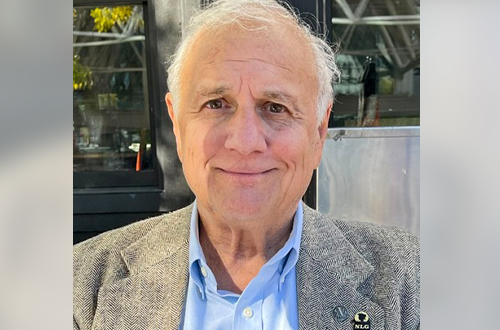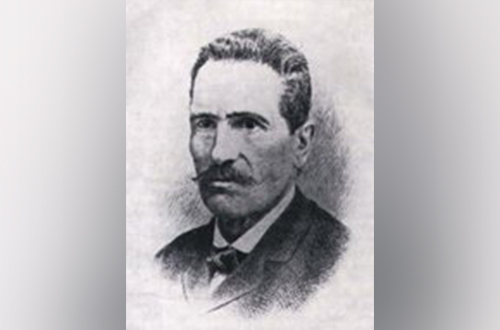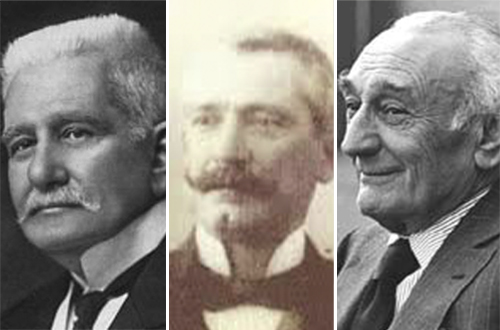
Three Entrepreneurs from Abruzzo
By Joseph “Sonny” Scafetta, Jr.
The Notiziario has in recent years presented profiles of individuals from Abruzzo or with roots in the province who have made their marks in the world of the arts. Abruzzo has also produced some talented and successful businessmen. Here is a look at three of them.
Raffaele Cappelli (1848-1921)
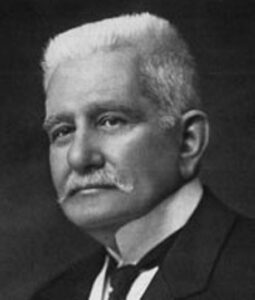
Credit: Wikipedia
Raffaele Cappelli was born in the community of San Demetrio ne’ Vestini (population 2,913 in the first Italian Census of 1861), in the province of L’Aquila in the region of Abruzzo, on March 23, 1848. His father was Salvatore Cappelli and his mother was Maria Maddalena Borgia. He had two siblings.
After he earned a degree in jurisprudence from the University of Naples in 1870, he commenced a diplomatic career for the Kingdom of Italy. He was first attached to the embassy in London. He returned to Naples in 1874 to marry his university sweetheart, Maria Pasqua. They had one son whom Raffaele named after himself. His next assignment was to the embassy in Vienna. He was next transferred by the kingdom to Berlin.
Realizing a lack of advancement in the diplomatic service, he resigned to return to his home province and run for the position of deputy in the lower house of the Italian Parliament as a member of the Historic Right Party. He was elected to the Chamber of Deputies on his first try in 1878. In 1885, he was chosen by the prime minister to be the general secretary of the Ministry of Foreign Affairs because of his prior diplomatic service. He served two years in this position.
Returning to the Chamber of Deputies, he developed a particular interest in agrarian reform because starvation was still a problem in different parts of Italy at that time. As a result, he was elected president of the Society of Italian Agriculturists in 1896. On April 6, 1897, he was elected vice president of the Chamber of Deputies.
In 1906, he decided to use one of his small farms as an experimental station. He hired Nazareno Strampelli, a competent agronomist and geneticist, to cross breed different wheat species to create a type that would be drought resistant. Eventually, his wheat experiments, conducted with Strampelli, resulted in the creation of a new drought-resistant wheat strain which was called Cappelli. Prior to its development, Italy was a net importer of wheat from Russia and the United States. After the seeds of the new strain were distributed nationwide, Italy became self-sufficient and no longer imported wheat from other countries. For his work, King Victor Emmanuel III made Cappelli a Marchese and a Cavaliere of the Grand Cross in the Order of the Saints Maurizio and Lazzaro on March 23, 1911, his 63rd birthday.
Back in the Chamber of Deputies, when the prime minister asked for a declaration of war against the Central Powers in May, 1915, Cappelli campaigned against the declaration, but it passed over his objections and Italy entered World War I on the side of the Allies. Nevertheless, Cappelli continued as vice president. After the war was over, he was elected Senator for Life on October 6, 1919. He served in the Senate, which is the upper house of the Italian Parliament, until his sudden death from a heart attack in Rome on June 1, 1921. He was 73 years old.
Sources (all accessed February 28, 2021):
- https://it.wikipedia.org/wiki/Raffaele_Cappelli
- https://www.myheritage.com/names/raffaele_cappelli
- https://it.wikipedia.org/wiki/San_Demetrio_ne’_Vestini
- https://www.lamiola.com/wheat-senatore-capelli–history-important-grain
Beniamino Laccetti
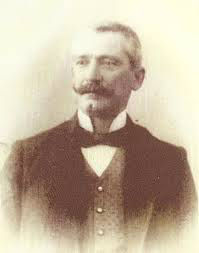
Credit: Vastesi in the World
Beniamino Laccetti was born on January 25, 1855, in the city of Vasto in the province of Chieti in the region of Abruzzo. Although he was a good student in school, his father took him out when Ben reached 14 and put the teen to work in the family’s mercantile trading business. Nevertheless, during his free time in the evenings, Ben taught himself by reading library books, particularly on geography and agriculture.
When he turned 21, Ben was sent by his father to Naples because it had a large harbor from which the family could continue to carry out its commercial activities. From the port of Naples, Ben opened trade with eastern European countries, particularly Romania, and then Africa. As a result, in 1898, he became a member of the African Society which supported the colonial activities of the Royal Italian Government in northern and eastern Africa.
However, the dream that absorbed Ben all his life was the building of a port at Punta Penna (Feather Point) which had a deep harbor located at the northern end of Vasto along the Adriatic seacoast. Ben imagined that Vasto could then take part in direct international trade. After much lobbying in Rome by Vastesi businessmen, King Victor Emmanuel III issued a royal decree in 1907 declaring Punta Penna to be the future site of a harbor with dual functions as a military and commercial port. After the Vasto City Council approved engineering plans for building the port, Ben went to Rome and presented the Italian Government with a plan. He proposed to bear the entire cost of the construction of the port if he would be granted a 30-year concession as a free trader so that he could recover his building costs by not paying any export and import duties. The Italian Government turned down his proposed private-public plan.
Dejected, Ben returned in 1920 to Naples where he became a member of the governing council of the African Society. He also became the General Secretary of the Circolo del Commercio (Circle of Commerce) in Naples. He then began publishing various studies and proposals, reported in over 20 publications, all international in character, for improving trade for Italy. In 1936 at the age of 81, Ben printed his last work: “Le Nostre Colonie: Cenni Geografici Generali” (Our Colonies: General Geographical Signs) with the explanatory subtitle “Studio Pratico per I Lavoratori” (Practical Study for the Workers). This guide summarized all his experience and knowledge gleaned from years of trading in various geographical areas. It was intended to pass advice on to young workers who were just beginning their colonial businesses.
Taking his own advice, Ben decided in 1939 to extend his business to Eritrea, which at that time was a province in northern Ethiopia, in eastern Africa. After the British Army drove the Italian Army out of Ethiopia, he relocated to the city of Tripolitania (now Tripoli) in Libya. When the American and British Armies drove the German and Italian Armies out of Libya, Ben returned to Naples. In 1946, the new Italian Republic adopted a plan to build a port at the naturally deep harbor of Punta Penna. In May 1948, Ben returned to his hometown of Vasto to witness the laying of the first stone of the port at Punta Penna. Finally, as a happy man, he returned to Naples where the life-long bachelor died after a year on May 16, 1949, at the age of 94.
Source accessed September 25, 2020:
Henry Salvatori
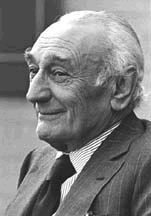
Credit: USC News
Ercole Salvatori was born in the community of Tocco da Casauria (population 2,662 in the 2017 Census) in the province of Pescara in the region of Abruzzo, on March 28, 1901. On April 17, 1908, the seven-year-old Ercole arrived at Ellis Island with his mother, Francesca di Giulio, and his two sisters. They soon joined Ercole’s father who had already settled on a farm in southern New Jersey. When the family members became U.S. citizens, Ercole changed his name to Henry.
Afterwards, the family moved to the Little Italy section of south Philadelphia where his father started a successful wholesale grocery business. Henry graduated from the local public high school in 1919. He earned a Bachelor of Science degree in electrical engineering from the University of Pennsylvania in Philadelphia in 1923 and a Master of Science degree in physics from Columbia University in New York City in 1926.
He then went to work as a geophysicist for Geophysical Service, Inc. In 1933 during the depth of the Great Depression, he left to establish the Western Geophysical Company of America in California. The company used reflection seismology to explore for oil and prospered. In 1938 at the age of 37, Henry married a 25-year-old actress named Grace Ford. They had a son, Henry Ford Salvatori (June 29, 1940 – July 23, 2016), and a daughter, Laurie Salvatori Champion, who was born on May 4, 1948. In 1961, the 60-year-old Salvatori merged Western Geophysical into Litton Industries and became chairman and chief executive officer of the joint company.
He then began a second career as a political activist. He started in 1962 by working in Richard Nixon’s unsuccessful campaign for governor of California. Next, in 1964, he chaired Barry Goldwater’s unsuccessful presidential campaign in California. In 1966, Salvatori served as state finance chairman for Ronald Reagan’s successful campaign for governor.
After retiring from Litton and tiring of state politics in 1969, Salvatori turned his attention to a third career as a philanthropist. That year he founded the Henry Salvatori Center for the Study of Individual Freedom in the Modern World at Claremont McKenna College, a private liberal arts school in Claremont, California. Over the course of the next two decades, he made large donations to the following: the Dorothy Chandler Pavilion which is an opera house in Los Angeles; the University of Southern California where he served as a life trustee; the University of Pennsylvania; Columbia University; Stanford University; Pepperdine University; Boston University; Saint Thomas Aquinas College in Sparkill, New York; and Hillsdale College in Hillsdale, Michigan.
After his wife died on May 5, 1990, he established the Henry Salvatori Foundation which endowed the Henry Salvatori Professorship in American Values & Traditions at Chapman University and the Henry Salvatori Professorship in Law & Community Service at the Chapman University School of Law in Orange, California. In 1991, he was honored by the Young America’s Foundation which created the annual Henry Salvatori Lecture Series. As a long-time member of the Order of the Sons (now & Daughters) of Italy in America, he donated in 1995 a corpus large enough to earn at least $5,000 in interest to fund the Henry Salvatori Scholarship which is given yearly to a worthy Italian-American student. The prize is now given in the name of his late son, Henry F. In 1996, the Heritage Foundation established the Salvatori Prize for American Citizenship which is awarded annually. He died in the Saint John’s Medical Center in Santa Monica, California, on July 6, 1997, at the age of 96.
Sources, all accessed June 22, 2021:
- https://en.wikipedia.org/wiki/Henry_Salvatori
- https://news.usc.edu/11494/Trustee-Henry-Salvatori-Dies-at-96/
- https://en.wikipedia.org/wiki/Tocco_da_Casauria
- https://en.wikipedia.org/wiki/Wesrern_Geophysical
- https://www.imdb.com/name/nm0285663/
- https://www.legacy.com/obituaries/latimes/obituary.aspx?pid=180
- https://www.mylife.com/laurie-champion
- https://en.wikipedia.org/wiki/Claremont_McKenna_College
- https://en.wikipedia.org/wiki/Dorothy_Chandler_Pavilion
- https://en.wikipedia.org/wiki/St._Thomas_Aquinas_College
- https://en.wikipedia.org/wiki/Hillsdale_College
- https://en.wikipedia.org/wiki/Chapman_University
September/October 2023




